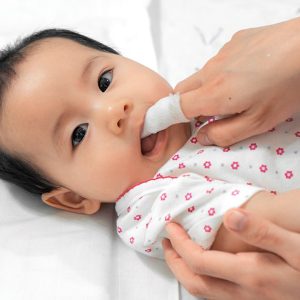

An involved dad is important to a baby’s first months and years of life.
Even when the dad lives outside the home, babies with actively involved fathers grow into healthier, happier, more successful children and adults. Babies need to form a strong bond with their parents, and that means dad, too.
Bringing home a new baby is a big change for everyone. There are many ways dads can help support mom and baby once they arrive home from the hospital.
Moms body goes through a lot of changes during the pregnancy. It may take a little while for her to feel like herself. Be gracious, patient, and supportive.
If you or your baby’s mom have anxiety, are feeling depressed, or have thoughts of harming yourself or your baby, get help right away. Talk with your healthcare provider. Untreated depression is hard on your baby, your family, and you.
Call 1-800-273-8255 for free and confidential emotional support 24 hours a day, 7 days a week.
Spend quality time with your older kids by having them help with getting a diaper, smiling at, or reading to baby.
Breastfeeding is the best way to provide nourishment to your new baby. It might not be easy at first so give mom plenty of encouragement and support.
WIC is here to support you. Call for any questions or for additional breastfeeding support.
Having breast milk or formula in your baby’s tummy is new to them. Babies spit up less and require less burping as they get older.
SPIT UP
Speak to your WIC Nutritionist or healthcare provider if you are concerned with the amount your baby is spitting up at each feeding.
BURPING
DIRTY DIAPERS
Be a hero, change diapers!
| Baby’s Age | Wet | Poops |
|---|---|---|
| Day 1 |
|
|
| Day 2 |
|
|
| Day 3 |
|
|
| *Day 4+ |
|
|
*This amount lasts up to the first month or longer.
Tummy time!
Laying on their tummy helps strengthen your baby’s neck and shoulder muscles. Think of it as their daily workout as they prepare for big moves like rolling over, sitting, and crawling.
Play peekaboo.
Talk to your baby and make funny faces while changing their diaper.
Go for walks.
Keeping active—getting out of the house is good for everyone!
Spend time reading and talking to your baby.
Their brain is learning new words every day, even from the day they are born.

Buckle them into a child safety seat before they ride in a car.


Visit www.cdc.gov/vaccines/schedules for information on when your baby is due for shots.

Always stay with your child when they are in the bathtub or near water.

Clean your baby’s gums with a clean, damp cloth or a soft rubber or silicone finger brush after they eat. Begin using a soft toothbrush with fluoride toothpaste as soon as their first teeth appear.

Always put your baby to sleep on their back on a firm mattress with no blankets or pillows.
The American Academy of Pediatrics recommends that babies sleep in the same room as their parents on a separate sleep surface until their first birthday.
Always put your baby to sleep on their back on a firm mattress with no blankets or pillows.
The American Academy of Pediatrics recommends that babies sleep in the same room as their parents on a separate sleep surface until their first birthday.
Your child is depending on you to be healthy and stay healthy.
Check for fatherhood initiative programs at your local Head Start program or school system.
Side-Lying Hold
This hold is useful when:
Cross-Cradle Hold
This hold is useful when:
Clutch or “Football” Hold
This hold is useful when:
Cradle Hold
This hold is useful when:
Laid-Back Hold
This hold is useful when:
Share
Share this link via: